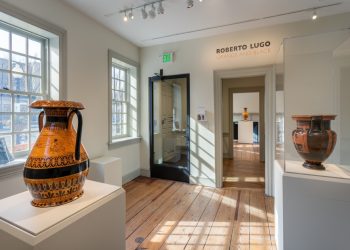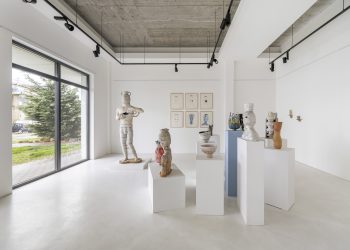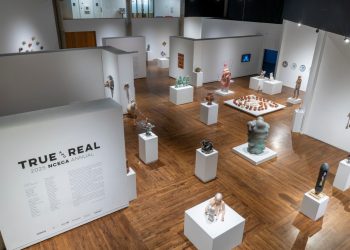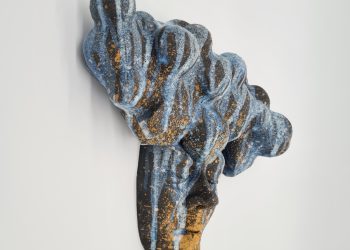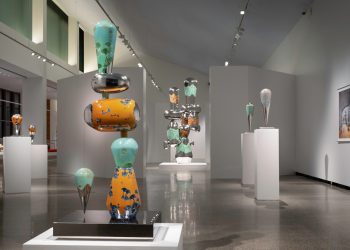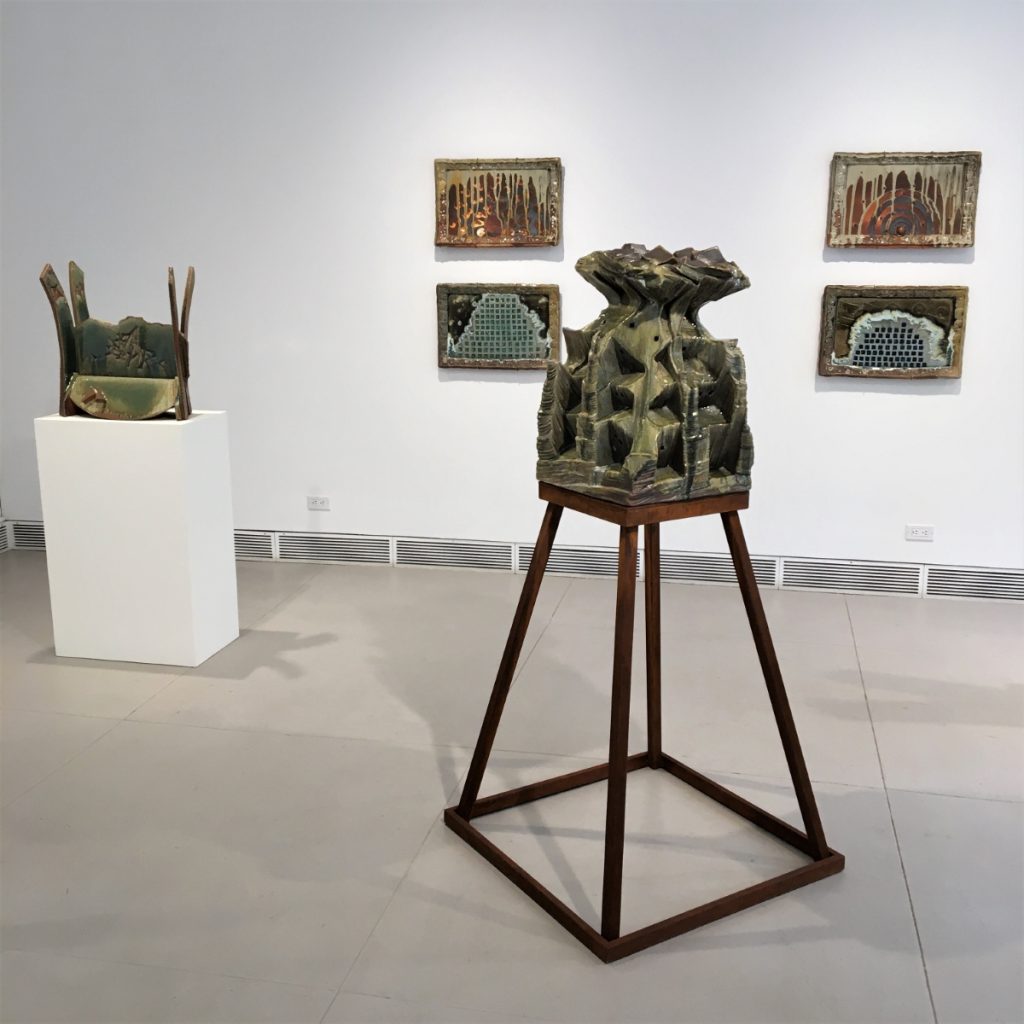
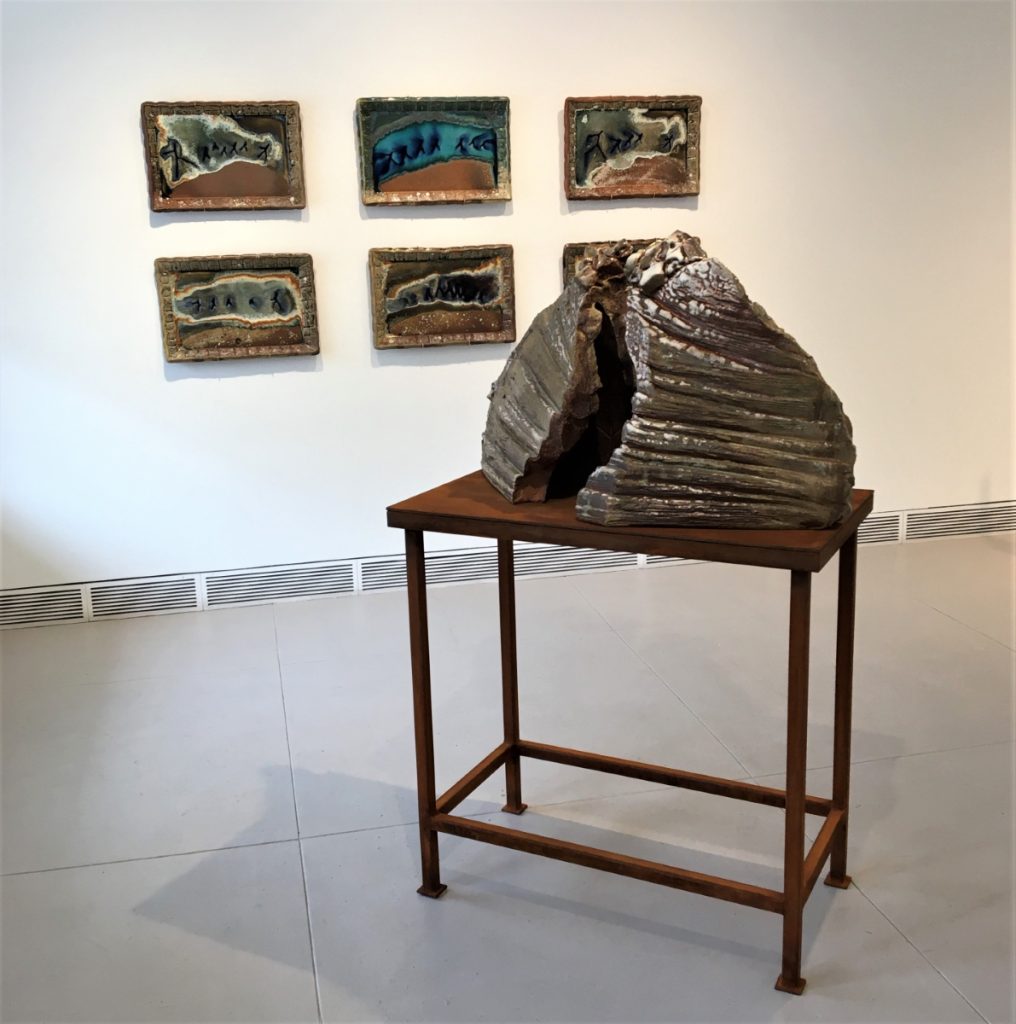
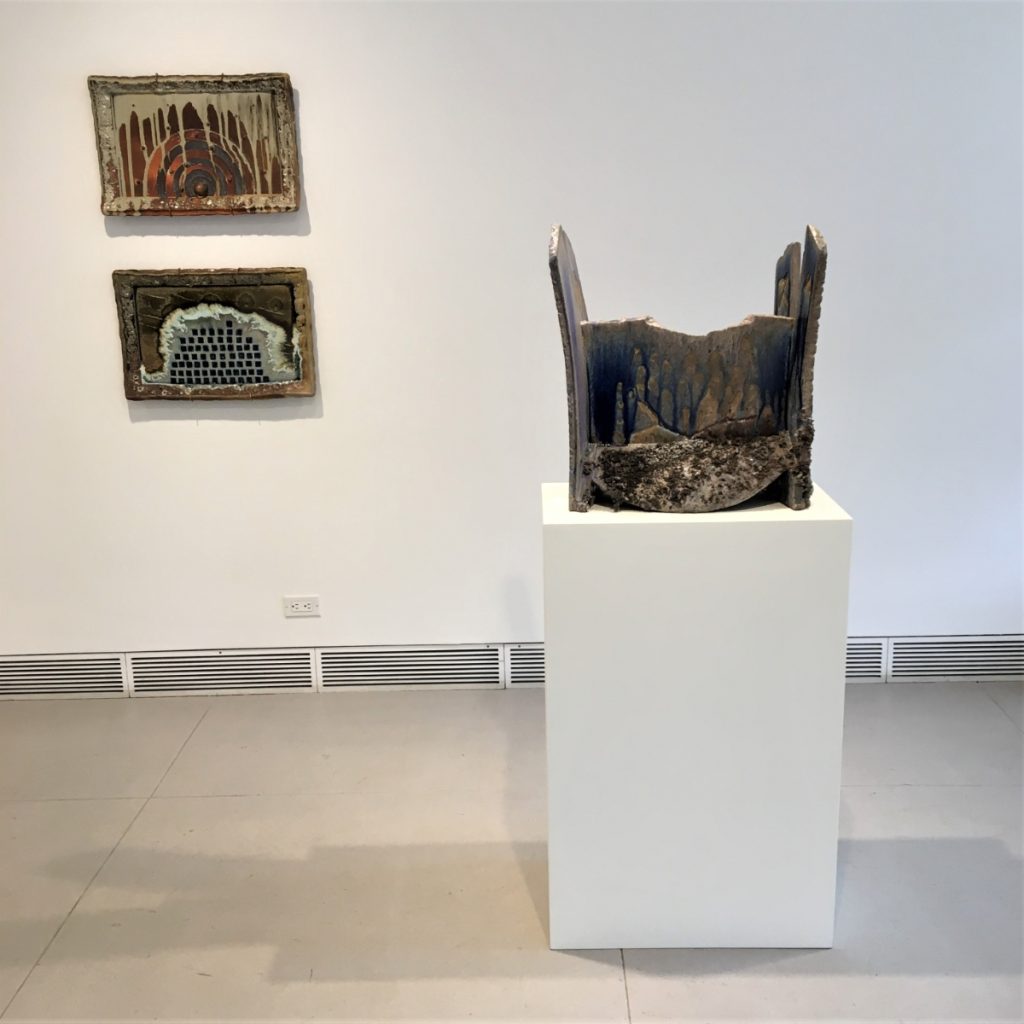
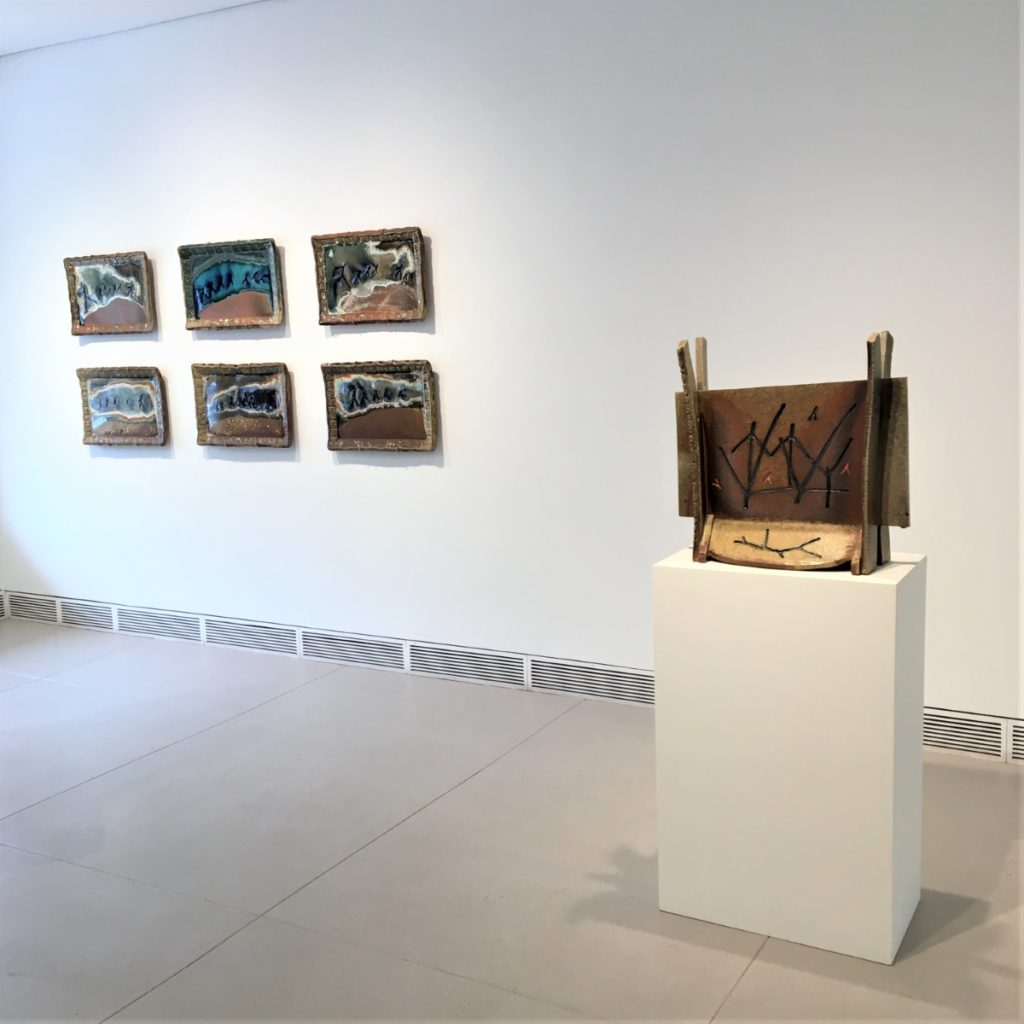
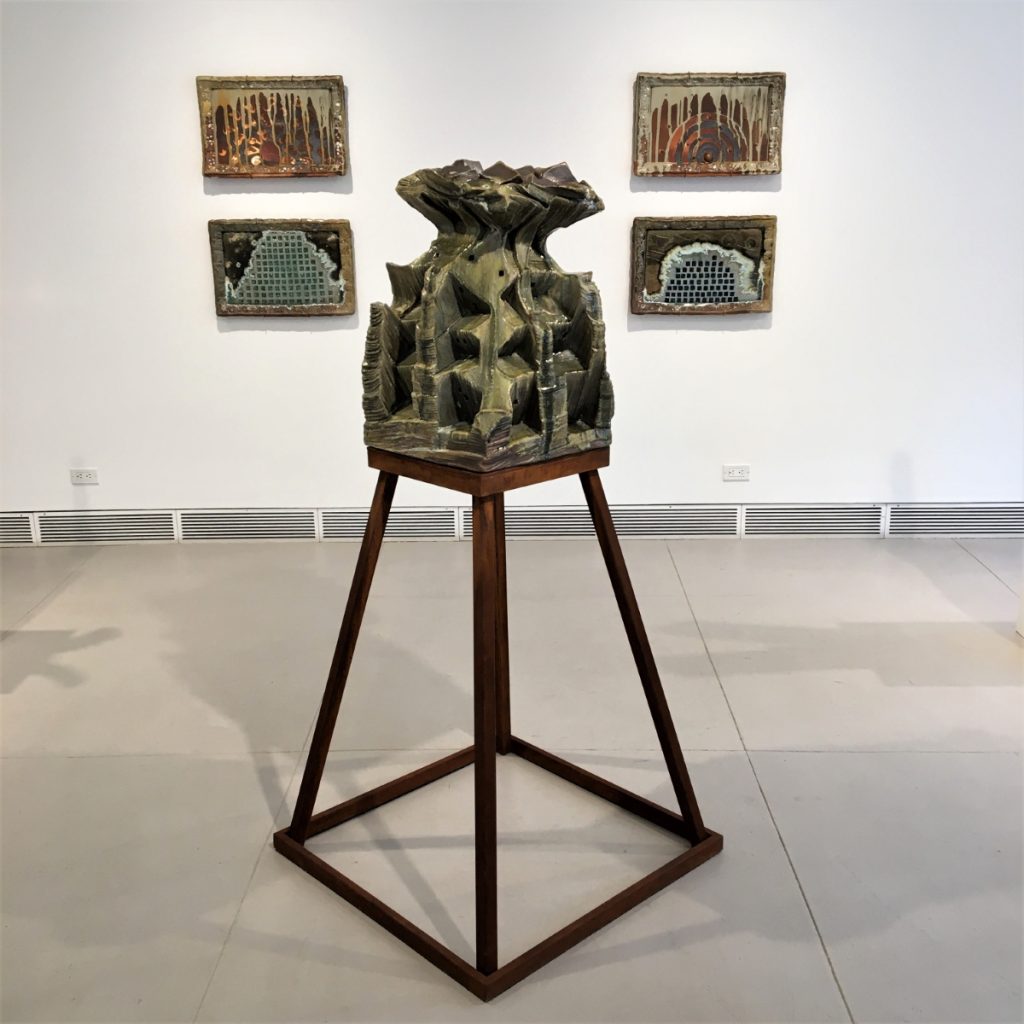
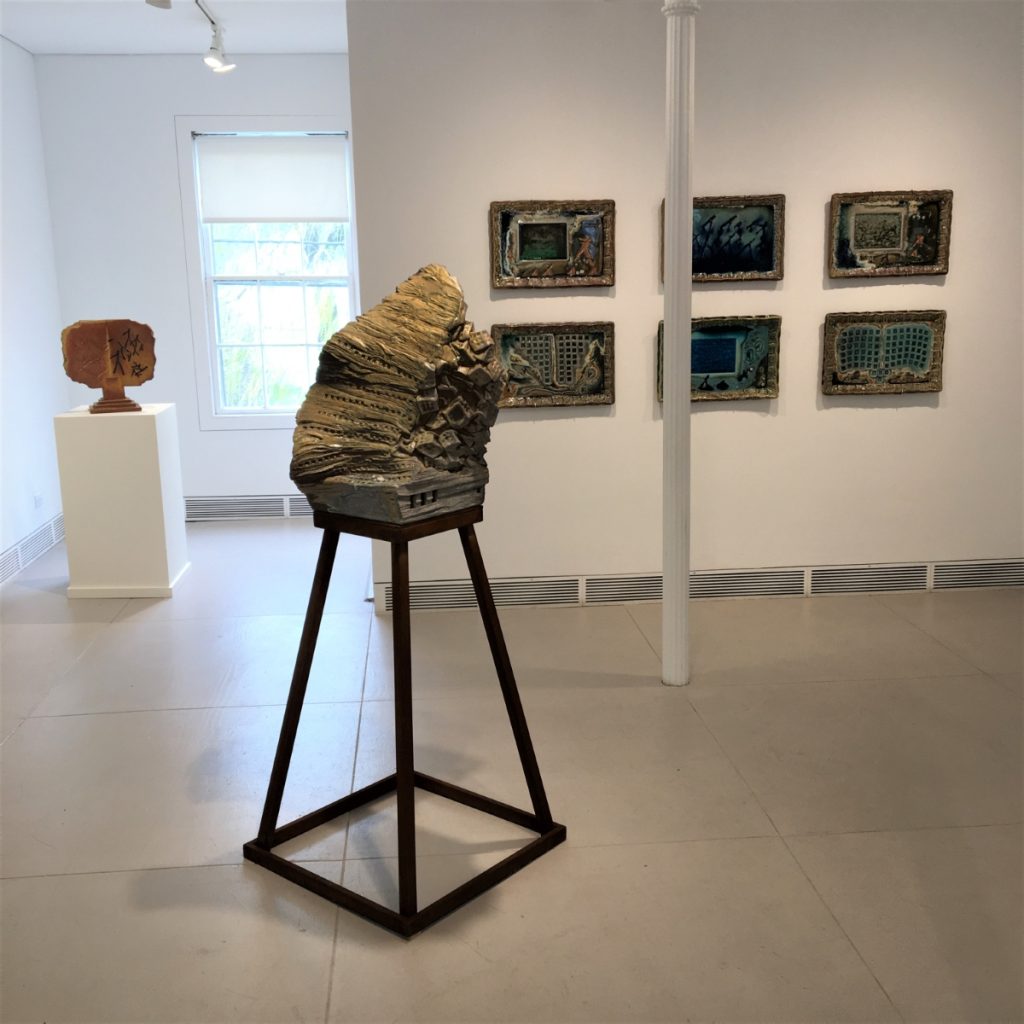
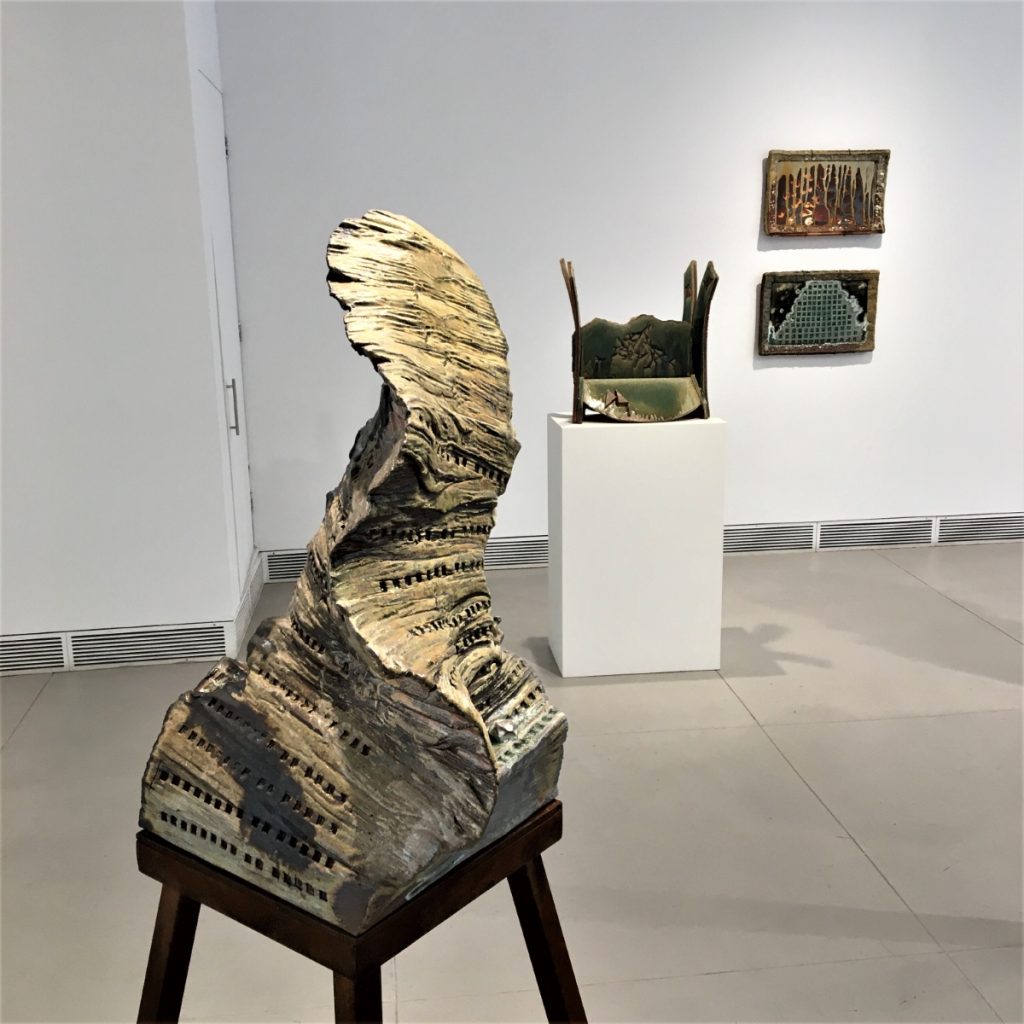
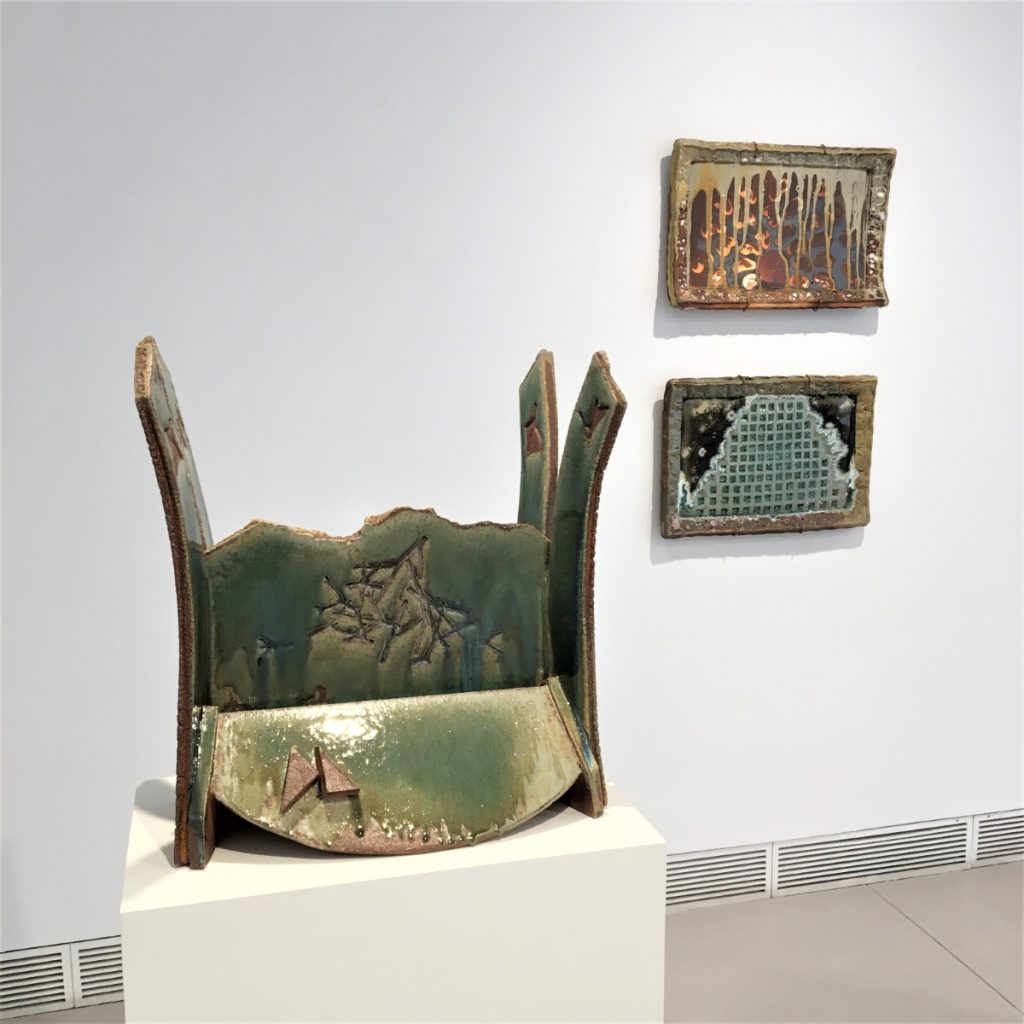
Tony Moore: Eternal Becoming is on view at Garrison Art Center, New York
April 8 – May 7, 2023
Garrison Art Center is pleased to announce the solo exhibition of Tony Moore, Eternal Becoming. Wood-fired Ceramic Sculptures and Fire Paintings. The exhibition features 3 large solid mass ceramic and steel sculptures, 3 smaller Open Form slab-constructed sculptures and groupings of 18 ceramic and glass Fire Paintings on the walls.
Tony Moore is represented in international museum collections including the Guggenheim Museum, Brooklyn Museum, US and Derby Museum and Yorkshire Museum, UK. This will be his second solo exhibition with GAC in the Hudson Valley where, after 25 years in NYC he has resided and maintained a studio in Cold Spring for another 25 years where, on a mountaintop property, he built a Japanese-style Anagama-Noborigama wood-fire kiln. His ceramic works are fired in the kiln three times a year in communal week-long events.
Tony Moore: Mastering the Indeterminate
Essay by Carl Van Brunt
Tony Moore is still on fire. The creative energy that has fueled his art practice for decades continues to burn bright as evidenced by the ceramic pieces from his three main bodies of work: Fire Paintings, Open Form sculptures, and large-scale sculptures on steel pedestals. These works embody his ongoing evolution as an artist fueled by his insatiable curiosity about what he may next encounter through the making of his art. His practice is a process of experimentation and discovery.
Moore embraces the fact that the chemistry of the materials he uses, including clay, glaze, glass, and metal, in combination with the variables of the wood-fired kiln he employs – temperature, air flow, positioning of the works within the kiln and the type of wood being burned creates a set of parameters which are essentially unrepeatable. He says, “the kiln is like a crucible where chemical changes take place, where interactions occur, often causing effects which couldn’t be known until they are actually seen.”
This is not to say that he is flying blind. Highly skilled, Moore is disciplined and methodical in his work. He states that he is “quite specific in observing the results, the manipulation of materials and the firing process. I’m very measured in what I do.” He also knows that indeterminacy opens up creative possibilities which can transform what could be the mundane repetitive production of objects into the enlightened creation of unique works of art. HIs experience of considering and wielding the expressive possibilities of form, line and color, coupled with the practiced hand and perceptive eye in service to the opening heart and mind are crucial as well.
Employing this open-mindedness, Moore makes variations within the framework of the several bodies of work he has developed over the years. Explorations of variable process also affect the expression of the narratives he explores. The Fire Paintings he has made since 2018 focus on the many mass migrations of humanity throughout history, including our own time. Instead of predetermining which specific aspect of this vast subject to express, he manipulates the positioning of evocative impressions of twigs into the surface of the wet clay, thereby suggesting figures moving across open ground. Variations of the amount and placement of glaze and glass applied to the clay lead, when fired, to compositional and color surprises which suggest multiple iterations of engaging narrative content. The figures in one Fire Painting may seem to be fleeing, while in another they can be seen as rushing towards a welcoming embrace; sometimes they seem to travel in darkness, at others, moving toward the light.
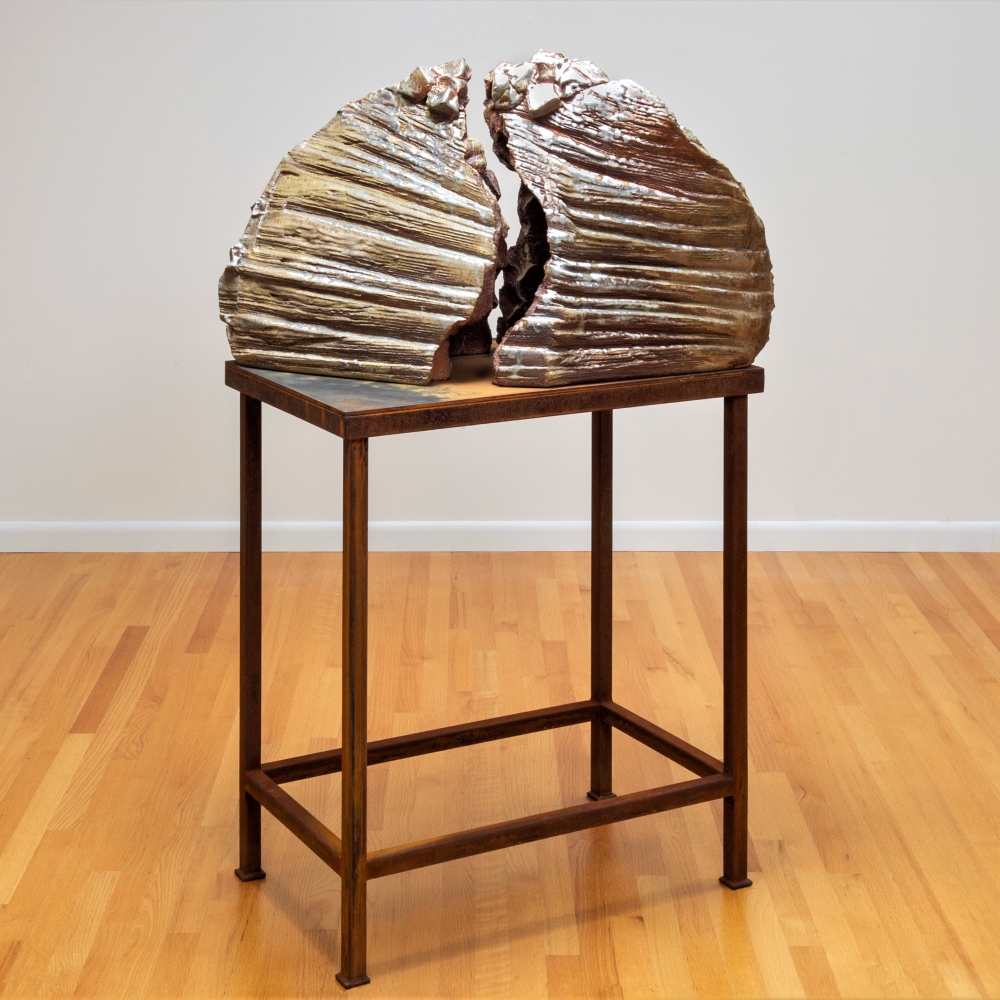
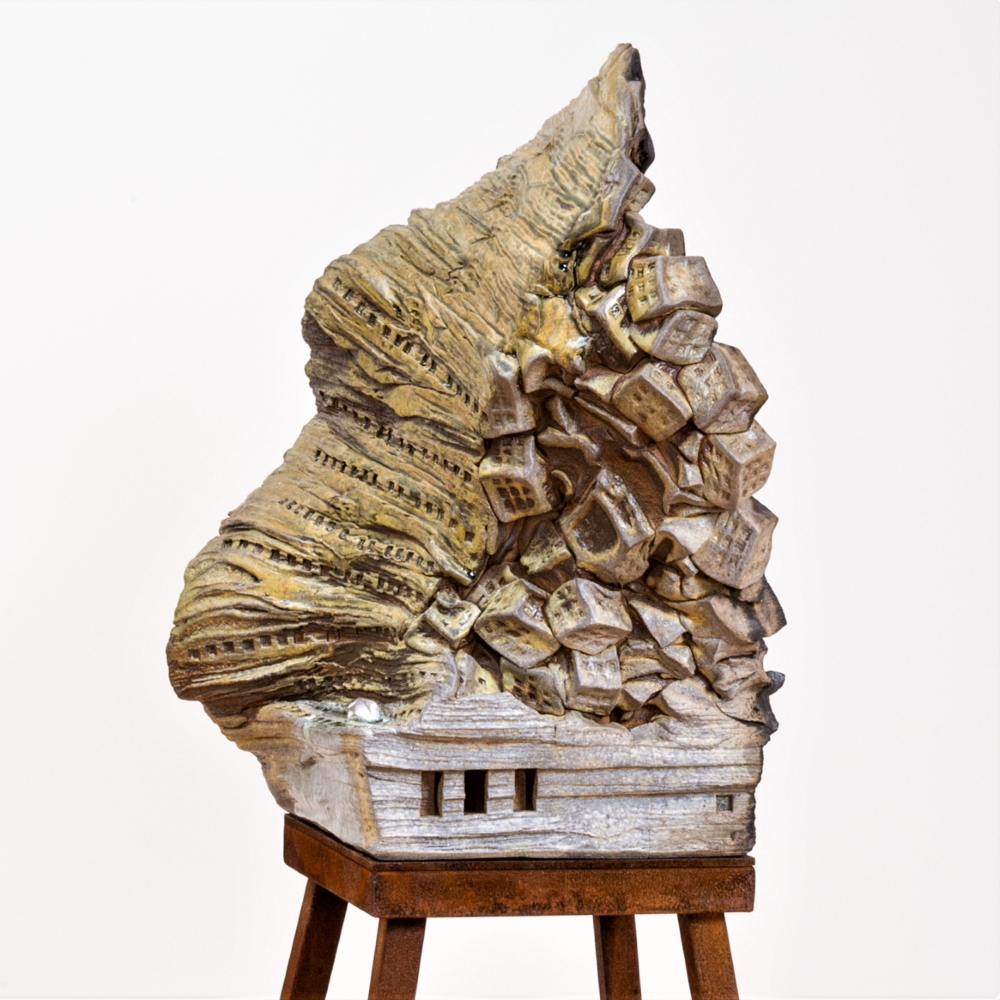
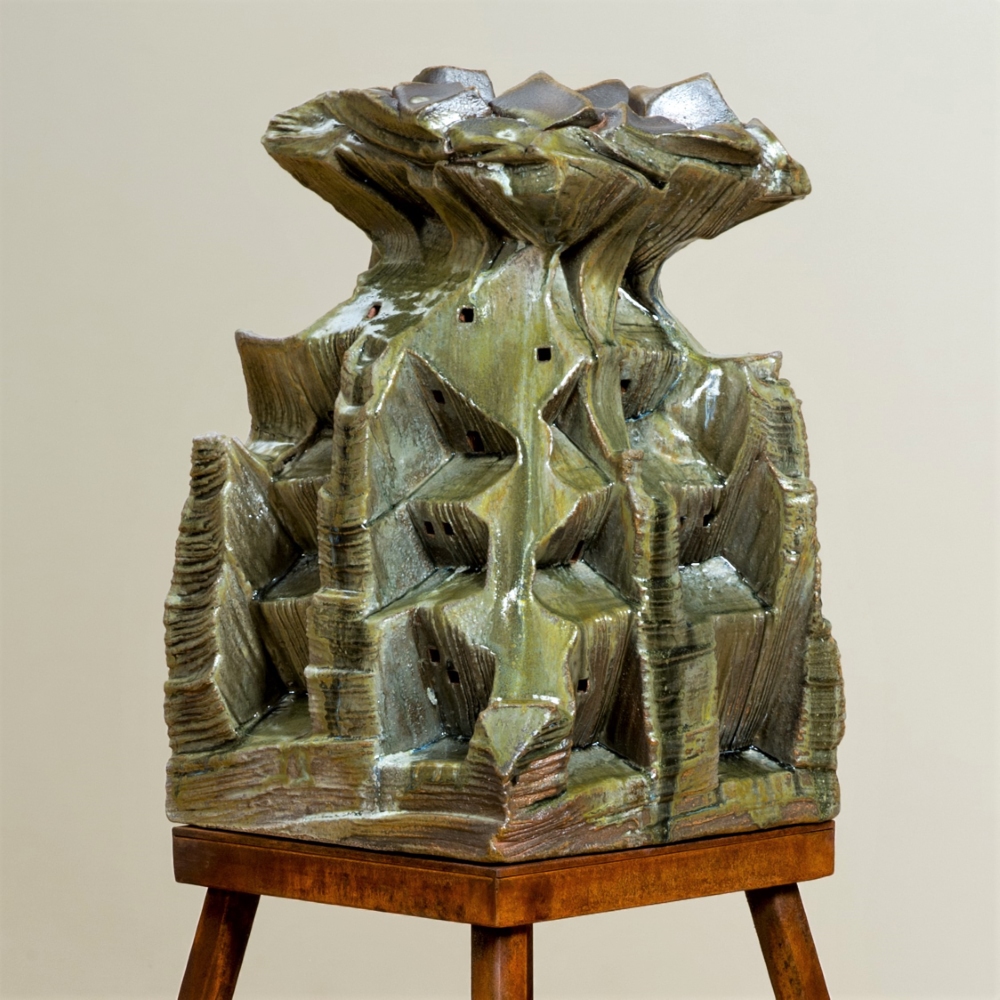
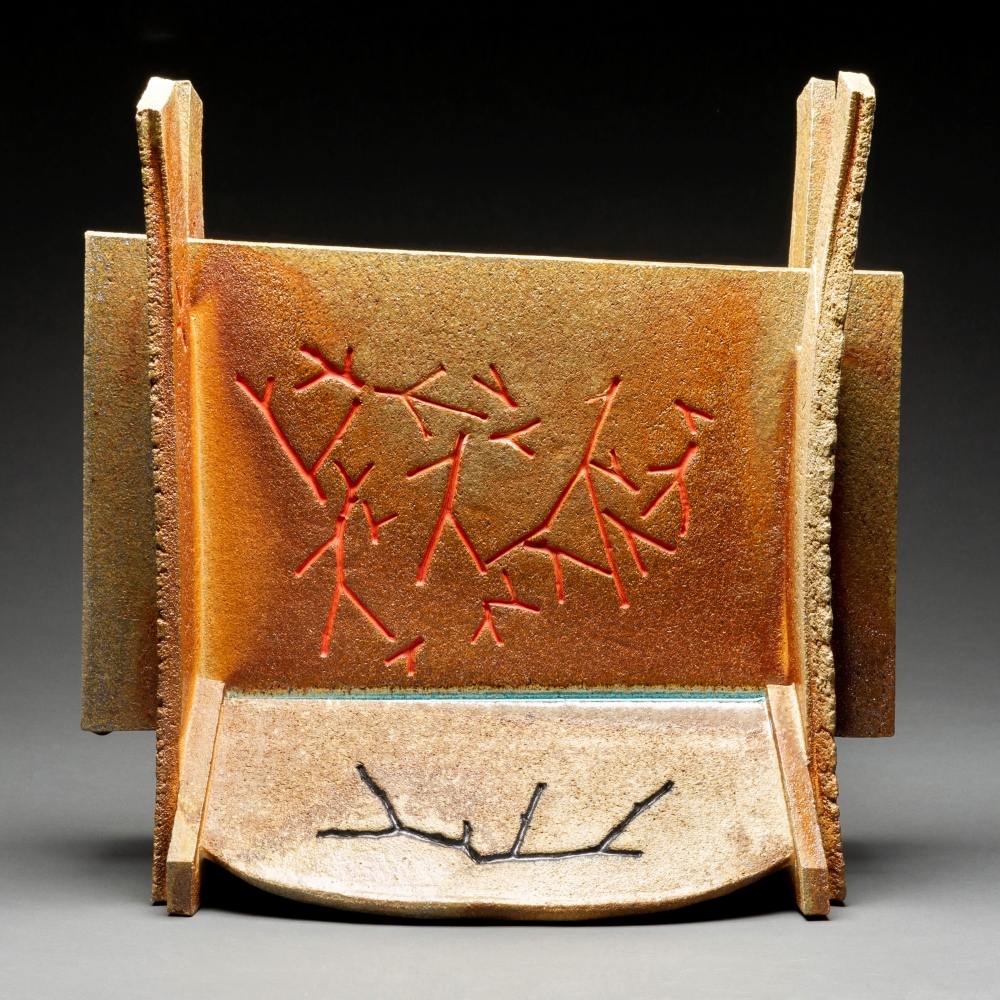
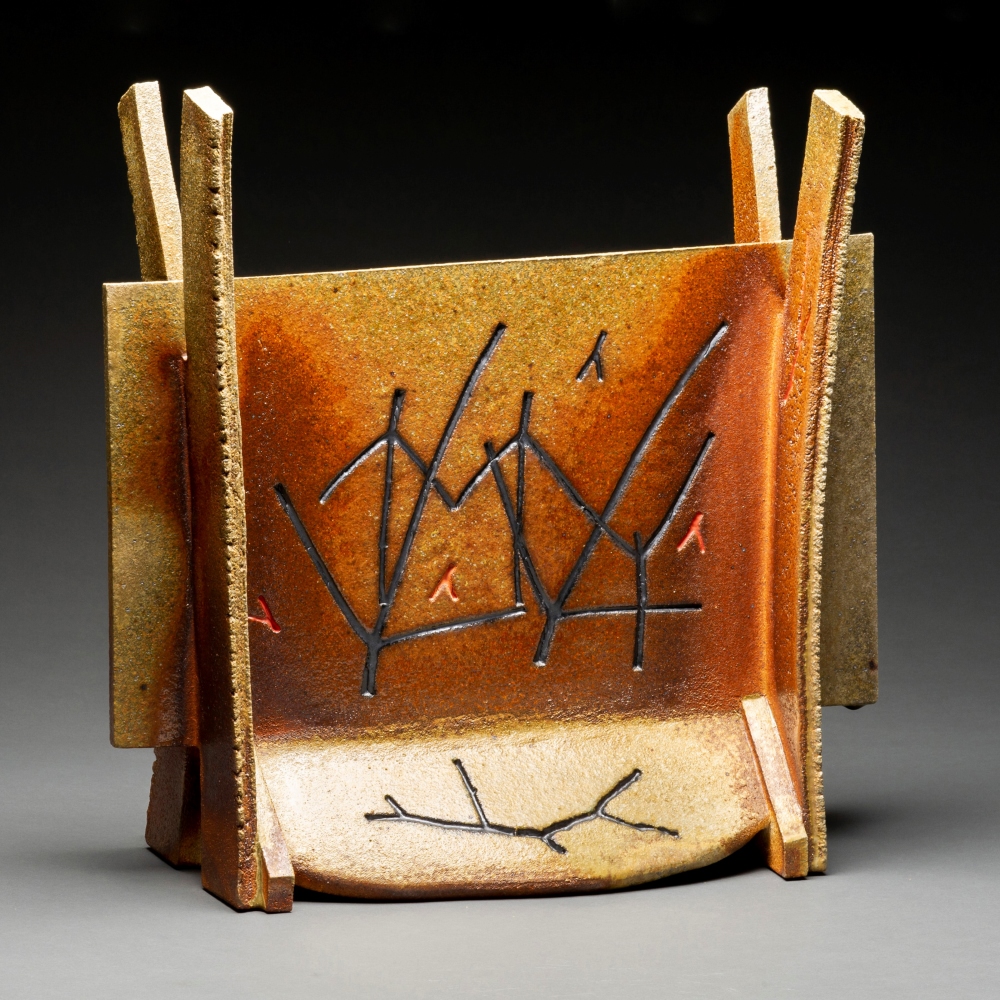
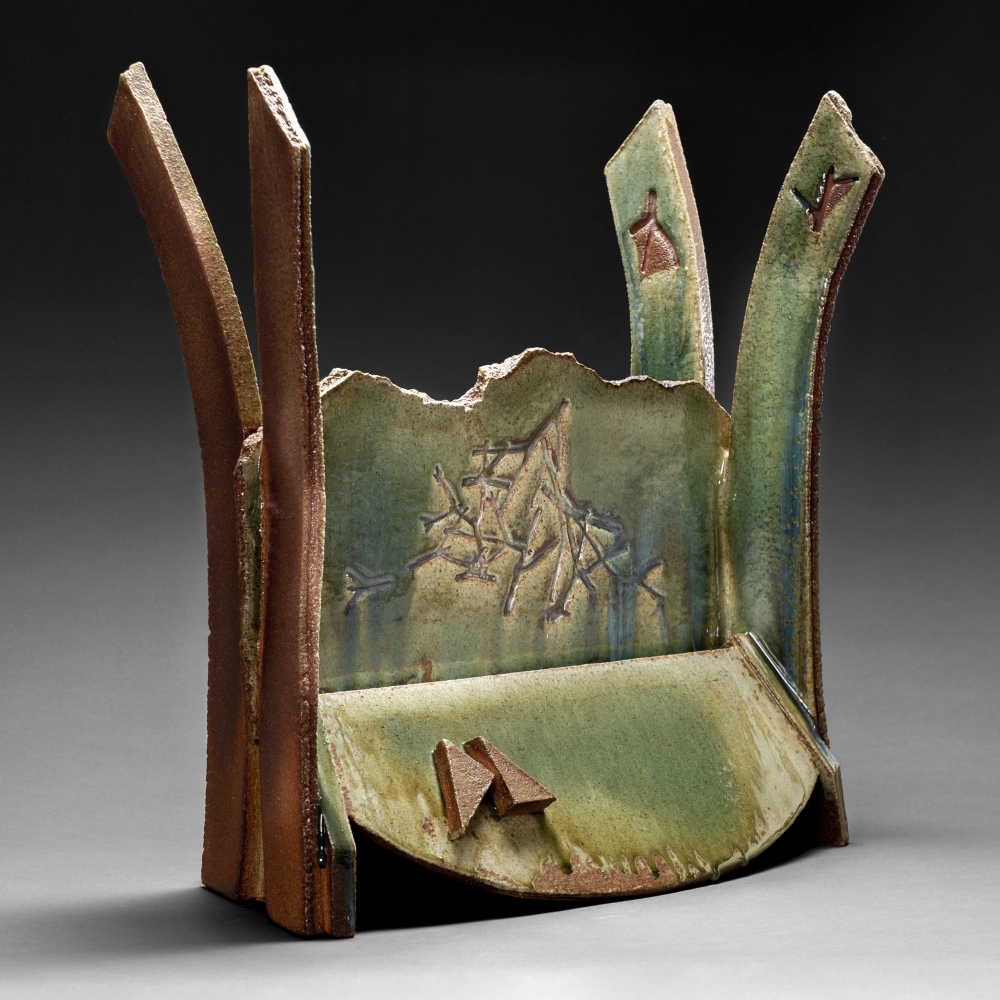
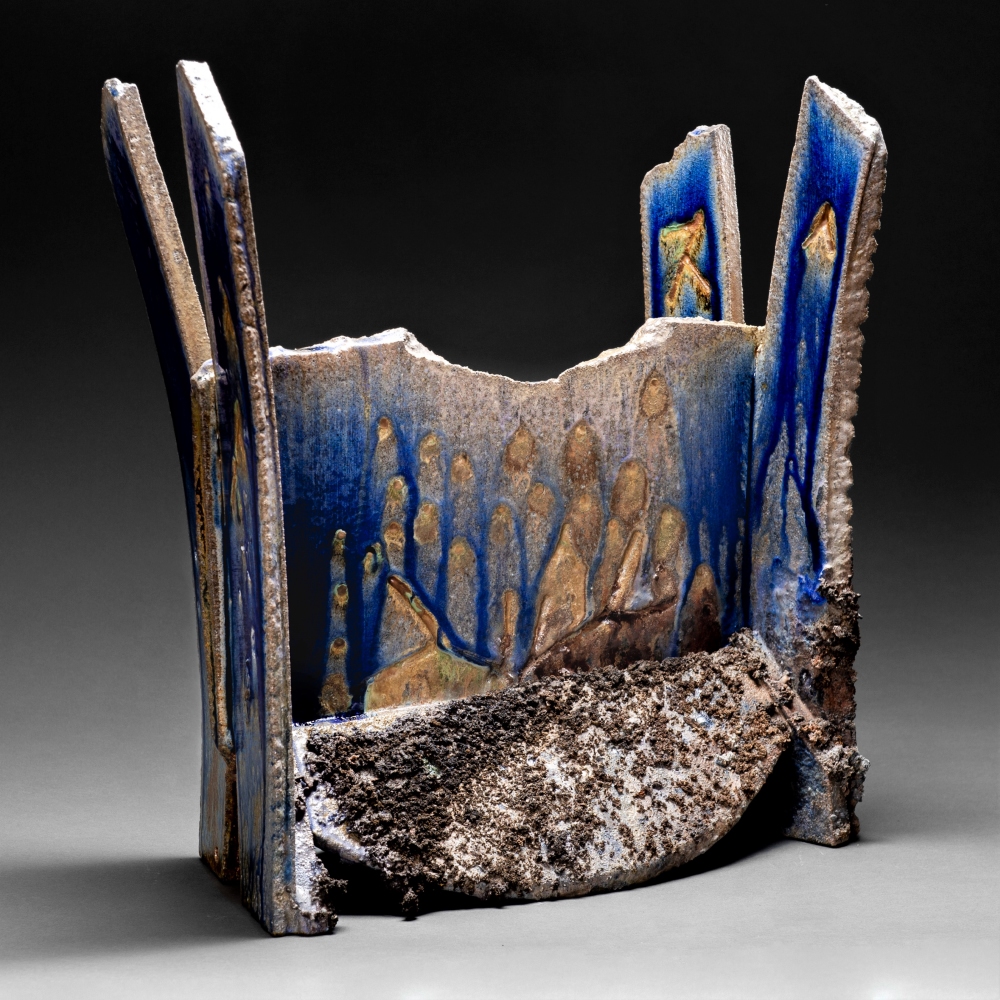
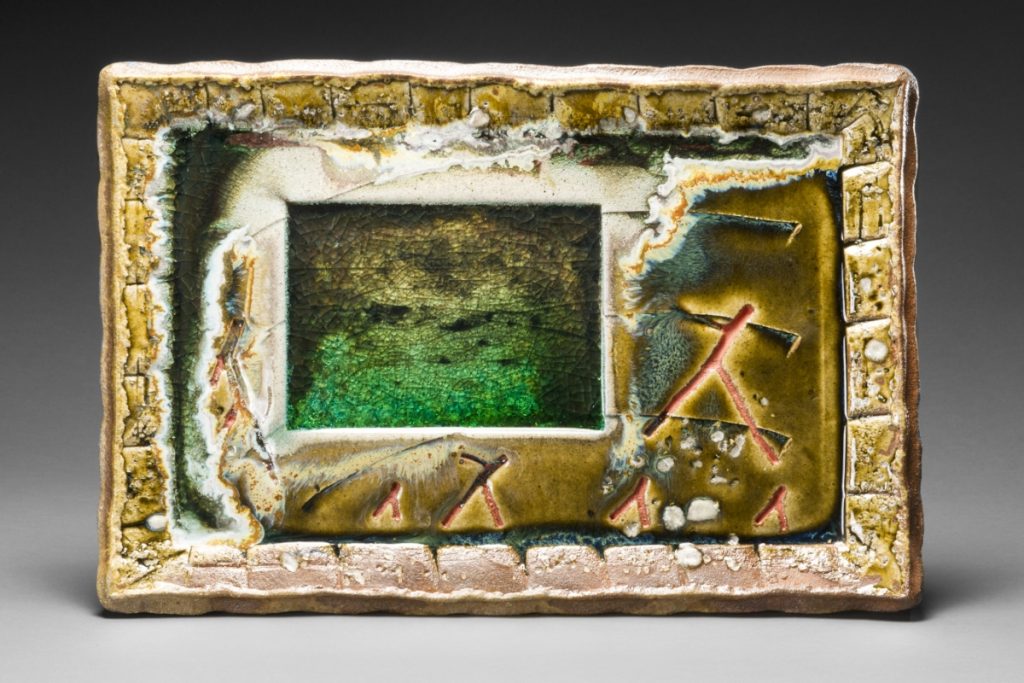
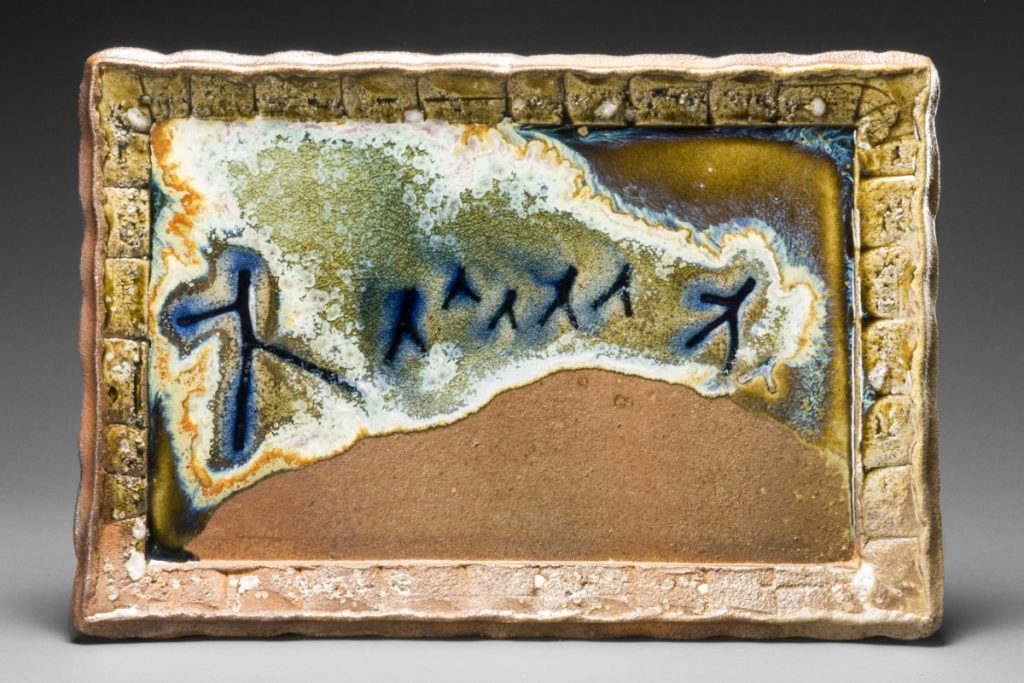
More recent Fire Paintings have expanded upon the use of glass, thereby adding new narrative dimensions as well. For Moore, grids of glass rectangles suggest an urban cityscape, influenced by the Bauhaus office buildings on NYC’s Park Avenue, north of Grand Central, where their windows glimmer in the afternoon sun. He sees other rectangular configurations as reminiscent of open books, perhaps imparting uplifting truths.
Moore’s Open Form sculptures with their unique architecture of uprising curves, often holding in place a vertical pictorial slab, can be seen to express the limits of earthly existence in relation to the rising spiritual force of nature that Moore senses at the heart of our day-to-day reality. In one of these relatively small but powerful works entitled All Together, one side of the central slab seems to use the impressed stick figures to suggest an advancing army while the other side of the slab suggests the resulting carnage of the battlefield. Each side of the slab is connected to another slab beneath, angled outward to display a single figure appearing to represent one of the fallen combatants; a reminder perhaps, that the bell tolls for us all.
Moore’s large-scale sculpture on a steel pedestal – the sculpture and the pedestal together as one work – entitled Injustice of Silence bears the striated marks of the 2 x 4 lumber which he used to pound its twisting and ascending form upwards. Stamps punctuate its surface, the letter forms silently intoning Children of Light. The square imprints of these letters also punctuate the surface of clay building blocks that were literally hurled by Moore at the emerging writhing shape. Working in this way is risky, there is no armature, the whole thing could have collapsed at any moment of misguided action. But there is no holding back this natural force of inspiration when it emerges in the work of an artist.
The large-scale sculptures have also evolved through Moore’s openness to the unexpected. The earlier pieces in this series such as Children of Light IV seem to suggest a monolithic presence. At one point however, in the drying process, one of these larger works cracked in half, which at first was disheartening to Moore, but then he realized new possibilities had literally been opened-up. In new works such as In Memory Of, the piece’s interior hollowness thus revealed, suggested an emptiness imbued with formal and expressive possibilities. The cracked edges themselves added a naturally elegant linear topography while the walls of the interior space became a surface for the placement of impressed figures, evoking a dwelling, refuge, or perhaps a ceremonial site.
Moore believes his works are places of remembrance where multiplicities of associations take place. He notes that most recently these have been concerned with issues of the human condition.
Carl Van Brunt is an artist, writer and independent curator, the former owner of Van Brunt Gallery Beacon, and Gallery Director of the Woodstock Artist Association and Museum.
Contact
info@garrisonartcenter.org
Garrison Art Center
23 Garrison’s Landing
Garrison, NY 10524
United States
Photo credit: Al Nowak
Captions
- In Memory Of, 2022, wood-fired ceramic, slip, shino, ash, steel, 58 x 39.75 x 20 in
- Injustice of Silence, 2017, wood-fired ceramic, porcelain, glass, steel, 63 x 25 x 25 in
- Children of Light IV, 2017, wood-fired ceramic, olive celadon, glass, steel, 60.75 x 29 x 29 in
- All Together, 2022,wood-fired ceramic, slip, glass, 21.75 x 22.5 x 10 in
- Falling Man, 2020, wood-fired ceramic, copper celadon, stone inclusions, glass, 22.25 x 20.5 x 10.75 in
- Blue Guide II, 2020, wood-fired ceramic, cobalt shino, rutile, stone inclusions, 21.75 x 20.5 x 9.5 in
- Fire Painting 14.11.18, 2018, wood-fired ceramic, glass, 15 x 22.5 x 2.5 in
- Fire Painting 2.11.18, 2018, wood-fired ceramic, glass, 15 x 22.5 x 2.5 in




